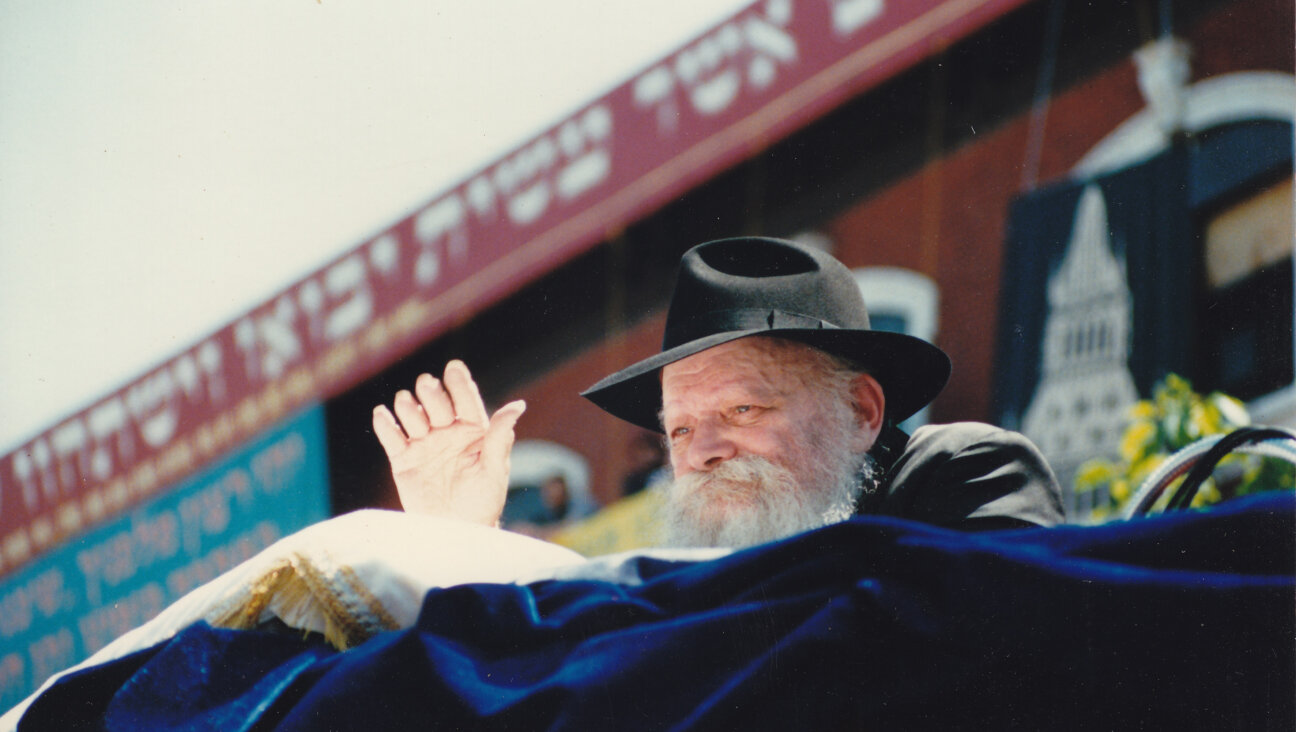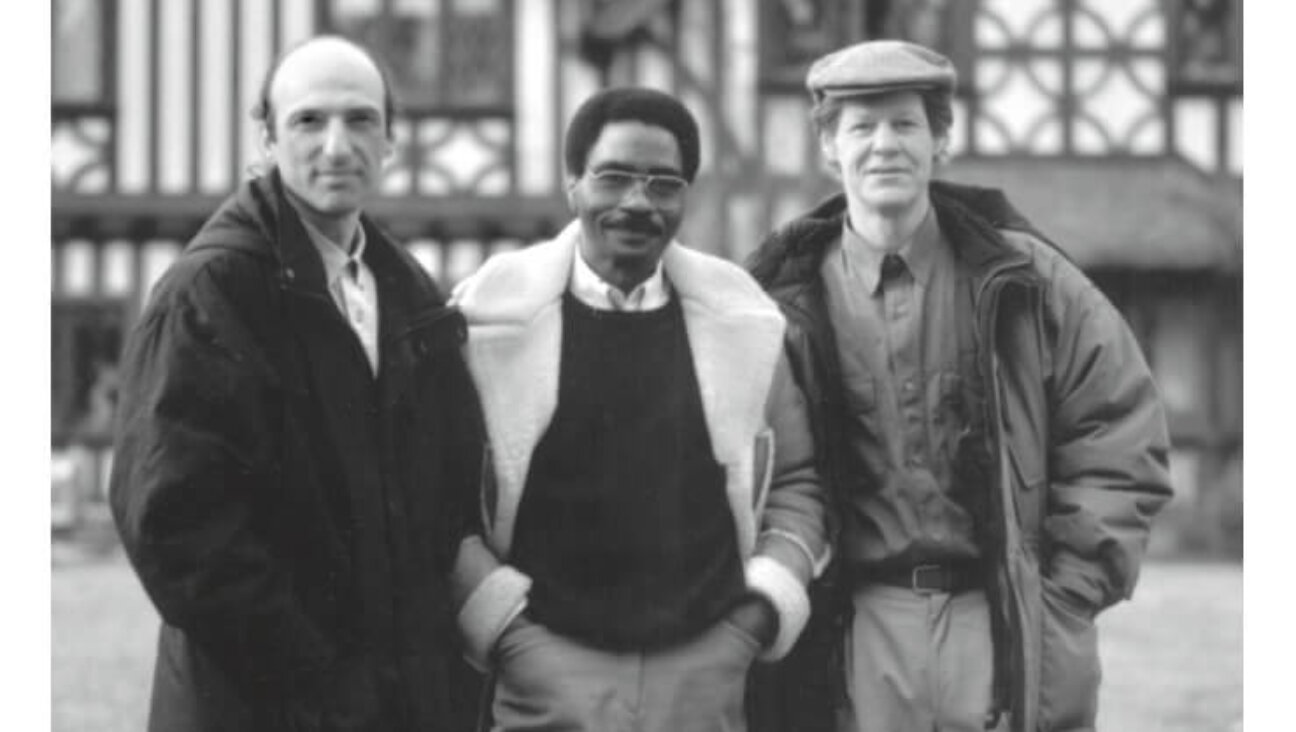A Changing Landscape
FAYE WATTLETON WOWS AT CENTER FOR ADVANCEMENT OF WOMEN BENEFIT
Leave it to sexpert Ruth Westheimer to head for the most powerful man in the room, Henry Kissinger, to give him her signature photo-op, neck stranglehold hug. Kissinger, his wife, Nancy, and Columbia University President Lee Bollinger were among the guests at the September 14 Center for the Advancement of Women benefit luncheon. The event, held at the Mandarin Oriental Hotel, honored Faye Wattleton, CFAW co-founder and president. Hosted by ABC News’s Deborah Roberts and her husband, Al Roker of “Today,” the luncheon featured a panel discussion on the theme “Changing the Landscape for Women,” starring Westheimer, actress Cicely Tyson and Eleanor Smeal, former president of the National Organization for Women. CFAW board chair Barbara Phillips described Wattleton as being “fierce about making a difference.” Wattleton, who was stunning in a turquoise sleeveless sheath that showed off her buff “Michelle Obama” upper arms, talked about her guiding philosophy. “We accomplish nothing alone,” she said. “Our lives are a tapestry of those who touch us and whom we touch…. The political and social progress won during the 20th century makes it possible for our daughters to grow up believing implicitly that there is nothing they can’t do, given desire, will and perseverance.”“But,” Wattleton continued, “women’s lives and articulation of their needs and aspirations must not flag or cease until women no longer average 80% of men’s wages four years after completing college and 69% 10 years later…. [Until] women’s presence at the table of the Congress of the United States of America is greater than 17% and women seeking the presidency are not measured by the shape and size of their ankles.” Adamant about violence against women, Wattleton touted the need to address the issue of “3 million children witnessing 4 million incidents of intimate partner violence in their home each year, and the 600 pregnant women killed by a domestic partner.”“I came out of Nazi Germany in 1939 on a Kindertransport to Palestine,” Westheimer said, taking the lead at the post-lunch panel discussion. “I was a sniper [with the Haganah], and I was badly wounded…. Any interference, whoever is not sweet with me… I can hit five bullets in a circle and handle hand grenades!” Westheimer then joshed, “I am a better skier than Faye,” prompting Roker to interject, “Because you have less to fall.” Not ready to give up the mic, Westheimer asked: “How come nobody is talking about sex? Few women know how to have sexual satisfaction. Can you say orgasm?” Roker interjected, “You can say it in five languages.” Westheimer retorted, “Every man can be trained as a lover.” An embarrassed Roker mumbled something that sounded like a reference to “The Dog Whisperer.” Smeal spoke briefly and touted Hillary Rodham Clinton for “making women’s rights a prime priority.” “I resent being called ‘a guy,’” Tyson said, recalling her early years as an actress. “I was a fresh face, had no problems being cast as a black actor. Expecting amenities based on my stature, I never anticipated that down the road I would have problems. I made a very strong decision about the kind of roles offered to me. Had I acquiesced, I’d be in a better financial state today.” Tackling the professional designation of women, Tyson honed in on the chairman/chairwoman nomenclature. “Women could not be called chairmen; they resented being called ‘chairwomen,’ so they are now labeled ‘chair.’”During the pre-lunch reception, I reminisced with Wattleton about our late mutual friend, Iraqi-born David Saity, who died in 2002. A successful stock analyst-become philanthropist, he was considered America’s foremost maven and promoter of Native American artwear and jewelry. Artist-signed Hopi, Zuni and Navajo creations in his stores in the Trump Tower at 57th Street and Park Avenue attracted an international following that included celebrities, models and movie stars. I first met Wattleton in June 2001 when, on behalf of Jewish National Fund, she presented a Tree of Life Award to Saity and his wife, Chaya, at a gala held at the Center for Jewish History. Almost every guest that evening — male, female, civilian or celebrity — including Natalie Portman, Lenny Kravitz and Joseph Fire Crow — wore one or several Saity-sourced pieces. Wattleton recalled: “I visited him the day before he died. He loaded me up with a cab full of jewelry [after] refusing payment. I insisted on paying. He relented and asked me for a figure, which I charged to American Express. The next day he died. When the bill came, the charge had been credited! He was so committed to Israel and its water [desalinization] program.”
I told Wattleton my favorite Saity story about the time he closed his first West 72nd Street jewelry store. Instead of moving the inventory to his new location, he called New York’s Hadassah headquarters and told them to come down — and take the store’s entire inventory and use it for fundraising.
600-YEAR OLD LEIPZIG UNIVERSITY EXHIBIT HIGHLIGHTS A MEDIEVAL JEWISH TREASURE
On September 9, Horst Freitag, consul general of the Federal Republic of Germany in New York, helped launch the exhibit In Pursuit of Knowledge: Six Hundred Years of Leipzig University, 1409–2009” at the Grolier Club. Touting Leipzig’s version of America’s mantra “… the pursuit of happiness” — he said that was the imperative that helped sparked the Leipzig demonstrations that set the stage for the 1989 “fall of the Berlin wall.” He underscored the point with an apt retro joke: “A man driving his car is stopped by the East German Stasi and told that his is the 10,000th car on the Autobahn and that he has won 10,000 Reichmarks. ‘We are in a Socialist state’ says the man. ‘What good will the money do me? Aha! ‘I’ll finally get a license’; His wife tells the Stasi: ‘Don’t listen to what he is saying. He is completely drunk.’ The grandmother in the back seat pipes up: ‘See, I told you we’d never get far in a stolen car.’ From the trunk came, ‘Are we finally in West Germany?’” Freitag touted the exhibition’s Machsor Lipsiae (the Latin for the exquisite 1320 Hebrew Leipzig Machzor), “one of the most beautiful examples of medieval bookmaking.” Noting that in medieval times, the city had been a center of printing and publishing that included “a revolution in the printing of music, Arabic and Hebrew,” Freitag paid homage to the city’s “newly restored Jewish community of 1,300… 10 times smaller than Leipzig’s prewar community.” But what particularly intrigued me was the Simon Dubnow Institute for Jewish History and Culture. The institute was established in 1995 at the Leipzig University (following a resolution of the state parliament of Saxonia), and since 1999 it has been headed by Leipzig University professor of Jewish history and culture Dan Diner.Dubnow (1860–1941), considered the greatest Jewish historian of his time, was born in Mstislavl in what was then Belarussia. The YIVO Encyclopedia of Jews in Eastern Europe describes Dubnow as “a Russian Jewish historian and ideologue of Jewish Diaspora nationalism…. His published works include the 10-volume ‘World History of the Jewish People’ which appeared in German, Hebrew and Russian and other translations in the 1920’s and 1930’s.” The YIVO entry further notes: “He rejected socialism, especially the Marxist form…. He felt that Marxism wrongly held as all-important the struggle of the working class against the bourgeoisie whereas it was the Jewish people as a whole that was under antisemitic attack.” After the 1925 founding of the Yidisher Visnshaftlekher Institut in Vilna (Jewish Scientific Institute — now the Yivo Institute for Jewish Research, located in New York City), Dubnow became a loyal supporter. In his autobiography, “Child of a Turbulent Century” (Northwestern University Press, 2006), Dubnow’s grandson, Victor Erlich (an author and professor of Russian literature at Yale University who died in 2007 at 93 and spells the family name as Dubnov), writes about his grandfather: “It was a well-known fact that Dubnov was in the main a secular thinker… but his attitude toward Judaism had evolved since his rebellious youth, when he was an epikoyres, a militant challenger of the rabbinical establishment…. [Though] he never became an observant Jew… he would attend the synagogue on the High Holidays, partly in deference to tradition, partly out of fondness for Kol Nidre (the song sung on the Day of Atonement). He found its symbolism particularly congenial and enjoyed celebrating it in the company of friends.” In the book, Erlich describes a Seder that the [Dubnov] family attended in the home of a Dr. Isaac Steinberg, “a figure among the Russian Jewish émigrés in Berlin.” He writes: “… the seder at the Steinbergs’ turned out… to be the most protracted Orthodox seder I ever attended…. As we were about to sit down at the table, the host produced skullcaps for all males present. My brother, who at 13 was a committed socialist and principled atheist, balked at the skullcap. The… tension was relieved by Dubnov’s quiet diplomacy. [Grandfather [who had had a bar-mitzvah] took Alex aside and said….‘Believe me, I could just as well dispense with a skullcap myself, but since we are in Isaac’s house, we should respect his feelings.’ There was something beguiling about the spectacle of an architect of Jewish secular nationalism pleading with his teenage socialist grandson to show consideration for the religious beliefs of [Steinberg,] the first Soviet commissar of justice.”
Erlich, along with his mother and Dubnow’s daughter, Sophie [Zofia/Sonia] Erlich, and his wife, Iza — all Japanese visa recipients — were shipboard companions of my mother and me aboard the Japanese liner Heian Maru, which docked at Seattle on August 1, 1941. Victor, Sophie and Iza, along with my mother and I, are shown at the railing in a photograph that made the front page of the Seattle Post-Intelligencer. The Erlich family, having made it to safety in America, could not have known then that just a month earlier, in July 1941, Simon Dubnow had been sent to the Riga ghetto, where, it was reported, he urged “Yidn, schreibt un farshreibt — Jews, write and record.” He was executed in Riga on December 8, 1941, and later buried in Riga’s old cemetery. The horrific news that Henryk Erlich, Sofia Dubnow Erlich’s husband and Victor Erlich’s father — a leader of the Jewish Bund — had taken his own life in one of Stalin’s prisons in May 1942 would not reach the family nor the world at large till much later.The Grolier Club’s In Pursuit of Knowledge exhibition, which runs through November, also includes a section of the “Ebers Papyrus, the largest surviving medical manuscript from antiquity, written in the 16th century BCE; parts of the oldest complete Bible manuscript, “Codex Sinaitucus”(circa 350); “The Mongolian Koran” (1305), and more. Speakers at the opening included William Helfand, president, of the Grolier Club; Christoph Wolff, Harvard University professor and director of the Bach Archives in Leipzig, and the exhibition’s curator, Ulrich Schneider, director of Leipzig University Library.
REMEMBERING “VILNE”—VILNA THE CITY, ITS PEOPLE AND THE BIRTHPLACE OF YIVO
The September 13 Nusakh Vilne Yizker & Memorial Lecture at the Center for Jewish History was as much a memory event as a lament — for a time, place and people lost. Hosted by Jonathan Brent, the new executive director and CEO of the YIVO Institute, the program opened with a lighting ceremony, noted to be “in memory of lost Vilna Jewish life,” by Feygele and Hinda Jacobs, as award-winning composer Binyumen (“Ben”) Schaechter played “Ani Ma’amin” on the piano.David Roskies, a cultural historian and the Sol and Evelyn Henkind Chair in Yiddish Literature and Culture at the Jewish Theological Seminary, read an alleged personal memoir of a 15-year-old boy returning to Vilna “70 years ago” to revisit the city and “taste” its magical ethos. A delightful, evocative bit of Yiddish cultural reminiscences, there was something amiss! If you did the arithmetic, that would make Roskies 85 years old. Yet, he was born in 1948 in Montreal. So authentic was the texture of the “memoir,” with its visual montages of people, places, food and romantic intrigue, that the audience forgave the author of such works as “Against the Apocalypse: Responses to Catastrophe in Modern Jewish Culture” (Harvard University Press, 1984) and “The Dybbuk and Other Writings by S. Ansky” (Yale University Press, 1992) for momentarily leading them astray in a world that they, too, would have wanted to revisit.The program included a wrenching reading about the 40,000 killed and buried in the pit in Ponary forest outside of Vilna, and embellished with a musical performance by Yelena Shmulenson-Rickman, accompanied at the piano by Schechter. Following YIVO director of development and external affairs Ella Levine’s emotional reading of Vilna survivors and supporters who passed in the past year, Brent made an appeal to those in the audience to send to YIVO whatever memorabilia or archival material they have for a compendium, a memory collection, “for future generations” — when there will no longer be Vilna eyewitnesses.Because I write about Vilna/Vilno (now Vilnius), readers assume that I am a Vilner. I speak like a Vilner, but I was born in Warsaw. Fleeing Nazi-occupied Warsaw, I arrived in Vilno in December 1939 atop a peasant cart filled with cords of wood. As I wrote in a 1983 memory piece:
“My first impression of Vilno was that of bitter white cold, cutting through the layers or clothing. A very brief overview: The boarding house on Stefanska street was typical of the old poor section where each tenant took turns taking out the slops from the communal lavatory a door down from a wood-burning stove in the kitchen. Across the street the Tutshkewer Baths where, if you tipped extra, the arthritic, varicose-veined, heavy breasted women attendants gave the oversize white enamel bathtubs an extra scrubbing with disinfectant.“I know there was a spring in 1940 and the calendar does indicate a summer that year as well, but I cannot recall the warmth of the sun. All I remember is the bitter cold and the crunchy snow underfoot — like no other snow anywhere else — and the snowballs machine-gunned at me by Christian boys on the street as I went to and from Yiddish school. After all, who goes to school on Sunday and plays on Saturday?
“There was the Real Gymnasium, and then the Gurewitch school. A photo of the large class, with my teacher, Lerern Kaplan, in the corner. Of the 40 plus children only I and Rokhele Stoler (who with her parents fled to Japan on a Sugihara visa) made it to America. The rest possibly died in the ghetto or at Ponary, a beautiful forest where for one summer I attended a day camp. My birthday party was at a children’s home run by TOZ. A photo shows some 24 children, including Leo Melamed [now chairman emeritus of Chicago Mercantile Exchange,] around the table. Only five of us children survived.“I remember our home on Slowackiego Street, a chestnut-lined boulevard not far from the YIVO where my father worked. Our cottage painted white, in the back a garden. It was in this cottage that the NKVD arrested my father in August of 1940. The next day my mother and I fled and lived hidden in a room behind a piano on Universitetska Street, across from Vilno’s university. The apartment, commandeered by Soviet officers and their wives, proved a godsend in keeping my mother and me from being arrested by the NKVD. The building still stands, seemingly unchanged since 1941 when on a dark dawn, we secretly fled to the train station enroute to Kovno, Moscow, Vladivostok and finally Japan.”If Vilna is your city — by birth, by family connection or through historical interest — I highly recommend Mira Jedwabnik Van Doren’s rich, evocative 2007 documentary, “The World Was Ours,” a glorious tribute to this multicultural Jewish city that Napoleon allegedly dubbed the “Jerusalem of the East.”
A message from our CEO & publisher Rachel Fishman Feddersen

I hope you appreciated this article. Before you go, I’d like to ask you to please support the Forward’s award-winning, nonprofit journalism during this critical time.
We’ve set a goal to raise $260,000 by December 31. That’s an ambitious goal, but one that will give us the resources we need to invest in the high quality news, opinion, analysis and cultural coverage that isn’t available anywhere else.
If you feel inspired to make an impact, now is the time to give something back. Join us as a member at your most generous level.
— Rachel Fishman Feddersen, Publisher and CEO






















